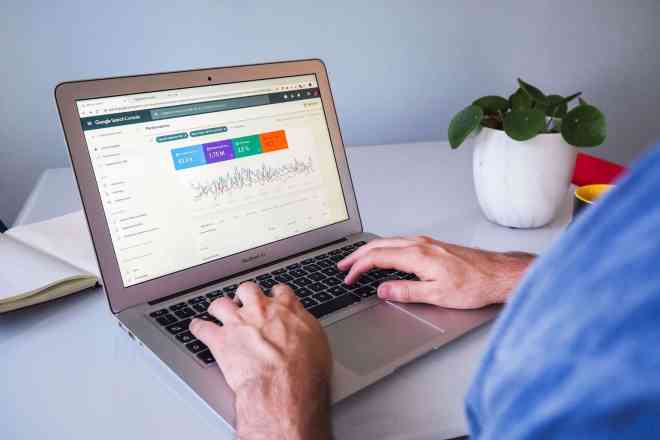With the popularity of platforms like TikTok and Instagram, it’s confusing what to prioritize from a marketing perspective. Every business’s priorities are distinct, and target audiences are just as diverse. Based on what a company knows about its customer base, is LinkedIn worth investing time and resources into a strong marketing strategy?
If yes, how does a successful LinkedIn advertising structure look? No social media platform is the same, with sponsored dashboards containing additional scheduling modules and widgets revealing further analytics. It’s time to distill the LinkedIn marketing strategy for campaign clarity.
Knowing the Components
Before exacting a marketing strategy that will generate countless leads, it’s crucial to know the elements of the LinkedIn marketing management platform. The Campaign Manager is the hub of all activity that works in conjunction with the free business page. It’s the place to set budgets and goals while obtaining an overview of campaign performance and engagement.
From there, you can set up individual marketing initiatives called campaigns — starting by assigning a goal of either:
- Awareness: Want to reach new eyes and give your brand a better chance of becoming a household name? Awareness campaigns do that, but lead generation isn’t often a byproduct.
- Consideration: This step combines brand awareness with effort. The goal is to entice prospective or returning customers to act on their deliberations.
- Conversion: Craft compelling calls-to-action (CTAs) to make people spend money on your brand. Great ads make people feel like it was their idea to spend money — not the ad.
By selecting a target audience, the campaign can provide the most value from your investment, the more specific the guidelines are.
Once a company sets specs, the advertisement comes to life in one of LinkedIn’s four forms — sponsored content, message ads, dynamic ads, and text ads. Businesses don’t have to lock themselves into one ad type, creating more versatility in visibility by allowing for mix-and-match content.
Sponsored Content
Get top feed priority with sponsored content. Whether you want to make an event, carousel, or video, there’s versatility in what a monetary investment can get professionals who sponsor their posts. Marketers can monetize the post as much or as little as they find value in that specific post.
If companies want to address a time-sensitive issue, they may fund it more heavily. If there’s a desire to affirm brand identity by affirming company values through thought leadership insight, that’s an option, too — at any price point. Sponsored content is data-driven to appeal to the most influential prospects, and LinkedIn has internal analytics to back up its efficacy.
Message Ads
Most LinkedIn users have received seemingly automated messages before from brands wanting to advertise job postings or offer promotional offers on services — these are message ads. It comes in two forms, either a DM or what LinkedIn calls a “choose-your-own-path” conversation where users click premade options to guide bots. Marketers can be selective about who they send messages to, so they can incite a recurring sale or trigger lead generation.
Dynamic Ads
How about creating a personalized ad for every user without making multiple campaigns? Dynamic ads solidify brand loyalty by making viewers feel more tended to by the company. Their name and photo appear in ads, allowing future job applicants to visualize themselves trying to reach out to a company. They can entice professionals to click on postings or ask users to start conversations for fee inquiries.
Text Ads
Text ads offer pay-per-click models that allow companies only to pay when the ad works. Marketers set their payment ceiling, and the ad stops when that maximum hits. Text ads are simple yet powerful, providing more comfort to viewers because it feels less like an advertisement and more like a regular person writing a post.
To get the most out of the ad, ensure the ad markets to specific users depending on intent. Experiment with geolocation or previous job title targets, which marketers can edit later if they don’t see the results they expect.
Setting Up for Success
As with any new endeavor, knowing the information is half the battle. The rest is execution. You should create a memorable marketing campaign, and LinkedIn rewards advertisers who invest time in their platform, enhancing other aspects of their LinkedIn presence.
Here are a few tips marketers can use to enhance related resources to enhance LinkedIn advertising campaigns:
- Become a star LinkedIn user by completing profiles to 100%.
- Media, like videos or photos, consistently perform better, so invest in higher quality.
- Use SEO knowledge to excel in searches.
- Write content that supports your industry — don’t always sell a product or service.
- Review analytics regularly to model future content based on trends and high-performing campaigns.
Additionally, it’s critical to know more about the audience before spending money to hit them with ads. Consider these questions before setting goals or assigning targets:
- Is the audience made of multiple markets that should receive more specific advertising?
- Despite the campaign’s goal, does the target audience intend to align with that goal?
- Am I making my ads unique by performing market research and analyzing how successful competitors in my sector use the platform?
- Are analytics exceeding expectations or underperforming, and how should budgets adjust to meet these goals?
How Much Will This Cost?
Answering this question can have nebulous or hyperspecific answers, depending on countless factors like industry and ad type. Generally, the cost of LinkedIn advertising is however much the marketers choose to allot for a specific campaign. If a company wants to spend $1 or $1,000, that is at their discretion, making LinkedIn as affordable as budgets can conceive.
However, depending on demographics, sectors, and other influences, there is nuance to how much each dollar is worth. The ad auction is the first vital consideration. To minimize competing ads to similar audiences, maximizing the benefit of a single targeted ad, every ad goes to an auction, awarding the slot to the highest bidder. Therefore, ads can be cheap if there isn’t a competition. They can be equally expensive if the market is rife with competitors.
Industries see differences in the dollar’s value if they work in particular sectors. Advertising as a startup on LinkedIn is different compared to a university. Education platforms can market everything from enrollment to online learning programs. In contrast, emerging companies have to spend money with a dissimilar intent — increasing awareness and utilizing LinkedIn’s potential to inform customer decisions.
The money these companies invest in LinkedIn advertising has other intangible values, which could translate into how much a company is willing to monetize its priorities.
Advertise on LinkedIn Like a Pro
Though every social platform contains varying elements, LinkedIn sets advertisers up for success and provides helpful tools, courses, and guides on executing campaigns like an expert. Becoming familiar with the process will help businesses save countless dollars in wasted advertising efforts and streamline marketing operations toward the most worthwhile ventures.


